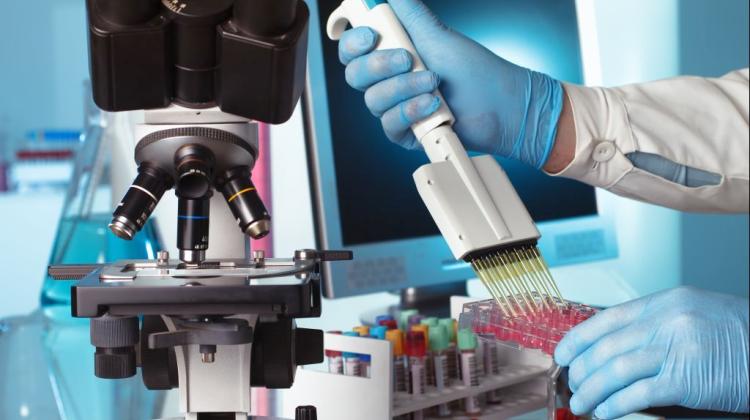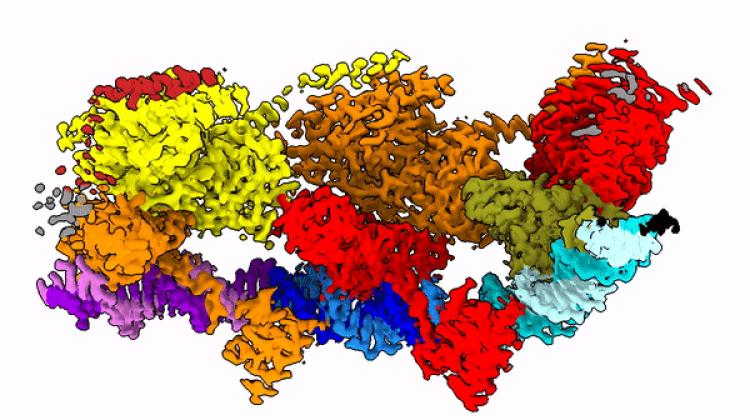Effective shuffling of plant genes - an opportunity to obtain new varieties

We now know how to perform genetic recombination - shuffling genes in the process of creation of reproductive cells - significantly more effectively than before. It will allow to obtain new varieties of plants faster and more cheaply.
Researchers have identified the genes responsible for the frequency of genetic reshuffling. They have also shown how these genes can be harnessed to ensure that recombination occurs efficiently, and the offspring is more varied - has more "shuffled genes".
This is great news, for example, for plant growers, who want to obtain new varieties of plants as fast as possible - those that will combine the best qualities of their parents. "With increased frequency of recombination, we can transfer features from one line to another more easily" - said the first author of the paper, Dr. Piotr Ziółkowski from Adam Mickiewicz University in Poznań.
"Under normal conditions, the process of introducing a new variety of plant, for example wheat or barley, takes approx. 10-12 years. If we increase the frequency of genetic recombination, we can work with smaller populations of plants, and obtain new varieties in less time, because the chances of getting the desired combination of genes increase significantly" - added the biologist from Adam Mickiewicz University in Poznań. The study - led by Dr. Ian Henderson of Cambridge - has been published in the latest issue of "Genes and Development".
SHUFFLING MOM\'S AND DAD\'S GENES
Organisms on Earth are extremely varied - even within species. Even the offspring of the same parents is usually significantly different from each other. This diversity is due to the process of sexual reproduction, the key element of which is the creation of reproductive cells (meiosis).
In the genetic material of animals and plants, each gene usually exists in two copies: one copy from the mother, the other from the father. To create a gamete, the material has to be somehow divided. But genes from father and mother do not just politely divide and go to different gametes. In the process of recombination of genetic material, genes are shuffled - chromosomes from mom and dad exchange fragments in fairly random places. This way, each gamete receives a mixture of versions of genes from each parent, and individual gametes differ.
LIMITED DESIRE FOR CUTS
The number of such cuts and genetic material exchanges in chromosomes is limited. "In most organisms, during meiosis one chromosome is cut on average in 2-3 places. Plant growers want chromosomes to be more shuffled" - said Dr. Ziółkowski. He explained that this would allow to obtain offspring with the most desirable characteristics. For example, if we have a variety that gives high yields and another that is resistant to disease, we want the future generations to have both traits. And this may require more cuts during recombination.
"We have identified the most important gene that controls the frequency of recombination in plants - HEI10" - said Dr. Ziółkowski. The research was carried out on a model plant - Arabidopsis, but it turns out that the same gene is also present in animals or humans - although it has a slightly different function.
"I have obtained transgenic plants that have extra copies of the gene. This allowed to increase the production of the protein encoded by it. HEI10 protein stimulates recombination in meiosis. The result is two or three times higher frequency of recombination" - said the researcher.
A GREEN GAME
To see how much the HEI10 gene may affect the diversity of offspring, researchers led transgenic Arabidopsis lines. On one chromosome, at a short distance from each other, they placed two genes that produce fluorescent proteins. One gene makes seeds lit by fluorescent light glow red, and the other - green. The line is then crossed with any line of Arabidopsis, for which we want to check the frequency of recombination. If during the formation of gametes, cut and exchange of chromosomes (recombination) occurs in the section between two fluorescence genes, the outcome will be single colour seeds: red or green. The seeds resulting from non-recombined gametes are two-coloured and under fluorescent light either glow yellow or are completely colourless. Determining the ratio of single colour seeds to all observed seeds allows to precisely calculate the frequency of recombination.
The method has been applied to both natural Arabidopsis lines and the lines with extra copies of HEI10 gene. It turned out that in the latter case the set of thus obtained seeds was much more colourful under fluorescent light than seeds from plants that did not have additional HEI10 gene. Among the seeds there were not only yellow and colourless ones - like parents - but also a lot of seeds that glowed red or green. That means that as a result of an extra HEI10, chromosomes were more often cut somewhere between the "green" gene and the "red" gene. The genetic material was more thoroughly shuffled, and more diverse.
"We have already submitted a patent application for our solution" - said Piotr Ziółkowski.
The scientist conducted research at the University of Cambridge, where he was on a Mobility Plus scholarship. Now he continues his studies on recombination control in Poland.
PAP - Science and Scholarship in Poland, Ludwika Tomala
lt/ mrt/ kap/
tr. RL
Przed dodaniem komentarza prosimy o zapoznanie z Regulaminem forum serwisu Nauka w Polsce.


















